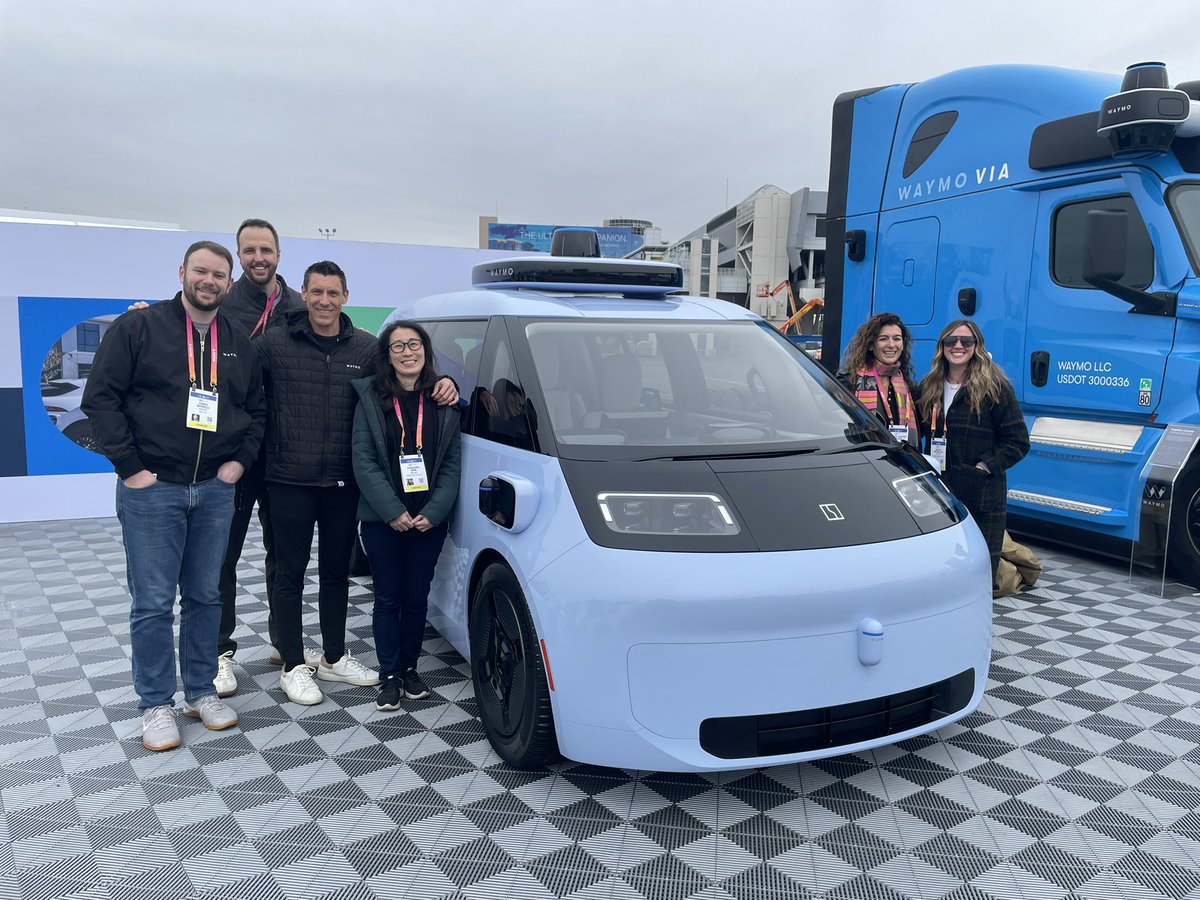diplomat33
Average guy who loves autonomous vehicles
Nice to see the Waymo-Geely vehicle on display at CES. I am hoping we see deployment of the Geely vehicle this year.


You can install our site as a web app on your iOS device by utilizing the Add to Home Screen feature in Safari. Please see this thread for more details on this.
Note: This feature may not be available in some browsers.

Spinning lidars always have these concentric lines on the ground.
Lidar point clouds are just massive strings of numbers.Solid concentric circles are an augmented visual aid on top of the actual LIDAR points.
Most visual LIDAR representations are augmented for human consumption. Otherwise, you'd just get a bunch of blinking points.
This is just my common sense intuition, so feel free to find some raw LIDAR point clouds to compare.
Raw lidar data are just numbers that represent X,Y,Z and other data. The same raw data can be represented graphically in the form of points in 3d space. The concentric circular pattern is just a result of how that particular lidar hardware scans.Solid concentric circles are an augmented visual aid on top of the actual LIDAR points.
Most visual LIDAR representations are augmented for human consumption. Otherwise, you'd just get a bunch of blinking points.
This is just my common sense intuition, so feel free to find some raw LIDAR point clouds to compare.



The "lines" in the visualization are just densely packed points, and the resolution of the lidar is higher than the pixel density of the display, so it appears to be a solid line. In a lower-res lidar where the display pixel density is not exceeded, you'd see dotted lines instead, and even more spacing between concentric lines.
Thanks for your analysis, but how would you explain the transition from the dense single points to the solid concentric lines in this picture that diplomat posted?
View attachment 893011
if i were to hypothesize, there are multiple lidar data feeds shown in the visualization with different fields of view and resolution.
The solid concentric lines are from the long range spinning lidar on the roof. The dense single points we see closer to the vehicle are from the short range lidar on the bumpers.
I know, but at first you were saying that it's so obvious I was wrong, but now it seems you aren't sure.
Why would there be multiple data feeds? We are just talking about the raw point cloud data.
I don't know. To me, it's very obvious you guys aren't thinking deeply enough about what you're seeing in these pictures. I'm not saying I'm right since I'm just using my common sense, but you aren't explaining all the contradictory details in the pictures.
Dude, I literally showed you a close up of hundreds of single points behind the solid concentric circles. This is the second time I posted this detail. Are you saying the lidar on the roof produces points AND lines?
I know, but at first you were saying that it's so obvious I was wrong, but now it seems you aren't sure.
Why would there be multiple data feeds? We are just talking about the raw point cloud data.
because the concentric pattern is such a defining quality of a spinning lidar, and it's also easy to explain. Not sure why you remain so dismissive of this and continue to think your "visual augmentation" hypothesis holds more water, esp after numerous other lidar visualizations have been posted showing the same phenomenon.
Behind the solid concentric circles are hundreds of single points that are grouped in a concentric pattern. Are you saying there's two separate spinning lidars in the roof that generate these two separate data streams?
Solid concentric lines = spinning lidar on the roof
Hundreds of single points behind the solid concentric lines = perimeter lidar on the bumpers.
I don't know how much simpler I can explain it.


